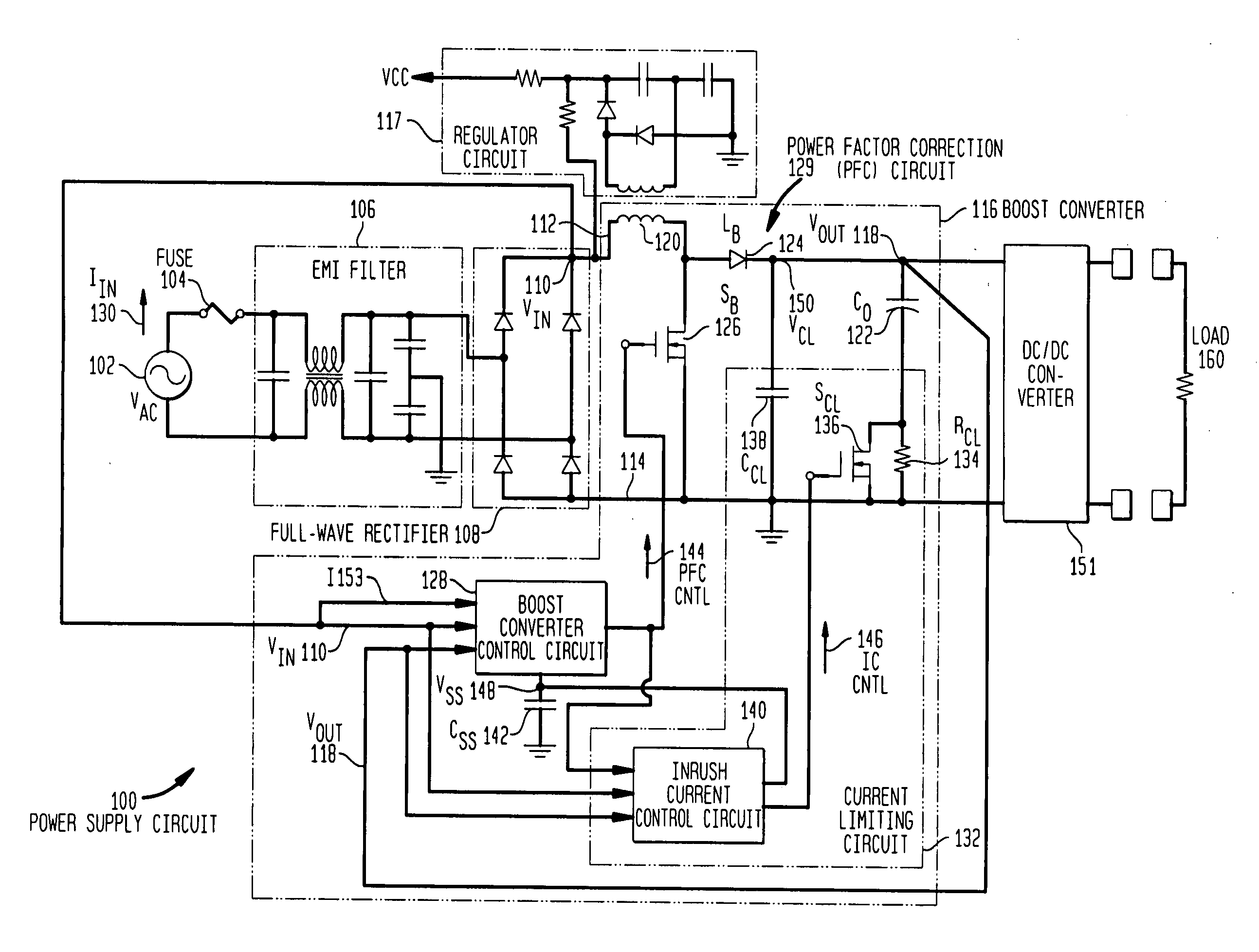Controlling inrush current
a technology of inrush current and control voltage, applied in the field of inrush current, can solve the problems of high inrush current damage to components, trip circuit breakers, and other undesirable effects
- Summary
- Abstract
- Description
- Claims
- Application Information
AI Technical Summary
Benefits of technology
Problems solved by technology
Method used
Image
Examples
Embodiment Construction
[0024]FIG. 1 is simplified schematic diagram of a power supply circuit 100 in accordance with one embodiment of the present invention. An alternating current (AC) voltage VAC 102 such as a utility line voltage is received through a fuse 104. AC line voltage 102 is filtered through an electromagnetic interference (EMI) filter 106 and provided to a full-wave rectifier 108. Full-wave rectifier 108 rectifies AC line voltage 102 to provide a rectified input voltage VIN 110 on conductor 112 with respect to a reference or ground conductor 114. In the exemplary embodiment shown in FIG. 1, rectifier 108 is a diode rectifier, although in alternative embodiments other types of rectifiers may be used. EMI filter 106 and rectifier 108 are collectively referred to herein as a phase control rectifying circuit. The structure and operation of EMI filter 106 and rectifier 108 are well-known to those of ordinary skill in the art and, therefore, are not described further herein.
[0025] Power supply cir...
PUM
 Login to View More
Login to View More Abstract
Description
Claims
Application Information
 Login to View More
Login to View More - R&D
- Intellectual Property
- Life Sciences
- Materials
- Tech Scout
- Unparalleled Data Quality
- Higher Quality Content
- 60% Fewer Hallucinations
Browse by: Latest US Patents, China's latest patents, Technical Efficacy Thesaurus, Application Domain, Technology Topic, Popular Technical Reports.
© 2025 PatSnap. All rights reserved.Legal|Privacy policy|Modern Slavery Act Transparency Statement|Sitemap|About US| Contact US: help@patsnap.com



